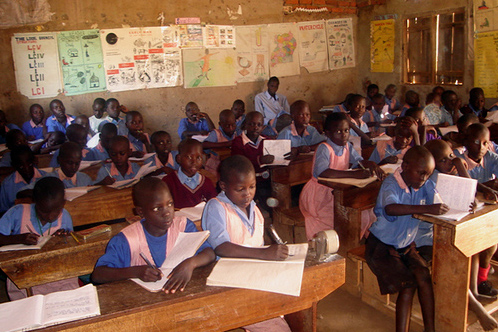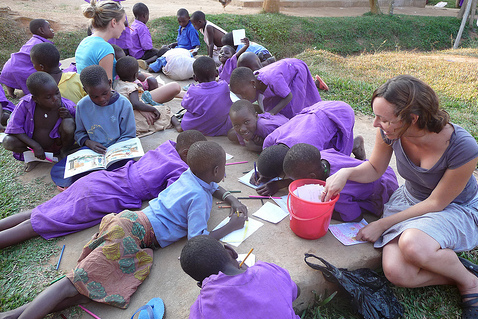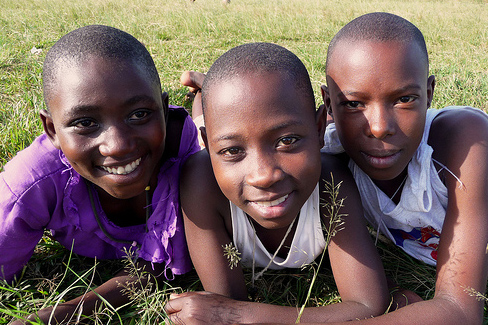How far would you go for internet access?
A Uganda school is raising funds to pay for internet access for its students and teachers. Can you imagine paying out all your cash for a 45-minute motorcycle ride just to check your email?

The vast majority of us can't imagine being cut off from the internet. How would we plan our lives, talk to our friends, run our businesses?
Indeed, one of the most controversial aspects of the Digital Economy Bill has been the section that introduces the ability to cut off the connections of persistent file sharers. Regardless of whether you see filesharing as a crime or think the laws need to be overhauled, many see disconnection as a step too far.
If your internet was cut off, how far would you have to go? To the office? Down the road to an internet caf? Or just pull your smartphone from your pocket for a little 3G action?
Students and teachers at one school in Uganda have just one way to get online. They pay out $2 much more than most teachers can afford, let alone students to take a 45-minute-long motorcycle ride to Kyotera, the nearest large town with a connection.
The school

The school is supported by the Uganda Literacy and Education Programme, run by the Canadian International Learning Foundation (CanILF) which IT PRO readers will remember for their fantastic work getting thin client devices installed in a girls' school in Kandahar, Afghanistan.
Depending on Kyotera's connection is no longer enough for the school. "I'm not sure how the internet in Kyotera operates but I do know that it doesn't work when it rains," ULEP Program Manager Mallory Mroz said.
Get the ITPro daily newsletter
Sign up today and you will receive a free copy of our Future Focus 2025 report - the leading guidance on AI, cybersecurity and other IT challenges as per 700+ senior executives
Looking to repeat the success of tech-enablement in the Afghan School Project, the supporters are looking to supply an internet connection to the orphan students and adult learners at KAASO as well as the wider community.
"The internet connection is not just a need for only the students and teachers at Kaaso but a concern of everybody, especially the nearby communities which include the schools, the sub county staff, [and] the dispensary," explains Mukwaya Dominic, the school's director.
It'll cost just $1,500 to install the connection and pay for a year's worth of service. "This means that internet is both possible and affordable," said Mroz.
So what will access to the internet give the students? "It will be a source of information," said Dominic. "Some times we lack good text books which can provide all the necessary material we need to give to our learners."
On top of that, CanILF has a series of online education resources, including web-based mentoring and a pen pal programme, that the school would gain access to for students and teachers.
Having internet access would help teachers improve themselves too. "Teachers, like any other person, need to be up to date with what is taking place in the world over," Dominic added. "Teachers also need to link with other people with in their profession or in another profession to get new or more ideas."
Mroz believes the internet could revolutionise Ugandan classrooms, bringing in more modern styles of teaching. "When I was in Uganda, I noticed that all teachers had the same style of teaching, in essence, lecturing," Mroz noted.
"Teachers rarely provided questions for the students to practice or apply their knowledge of the material," she said. "Teachers teach in a way that may reach a few students but others struggle without visual aids, practice time, or oral interaction. The internet can allow teachers to access more training and seminars in this field and provide them with sample questions for their subject matter."
"Teachers will be able to do research into the material that they are teaching, lesson plans, teaching methods and practice exercises for the children. It will also allow teachers to improve their own English skills, as English is the second language for all teachers at KAASO," Mroz added.
On top of that, the school is located in an area with a high incidence of HIV/AIDS, as well as malaria, and looks to the internet as a valuable source of information on preventative measures, as well as more general nutrition, health and hygiene.
Wider community

"People learn about opportunities by word of mouth, go to town to apply for the funding and aren't able to complete the application form as they are illiterate or semi-literate in their own local language (Luganda), let alone in English which is the 'business' language of Uganda," Mroz said.
"Internet access will contribute to the linguistic training of the community and it will allow people to access micro loan programs that are beyond their local village," Mroz explained. "For instance a number of international organizations for instance, kiva.org or World Vision offer microloan programs that people wouldn't necessarily find out about without internet access."
"Internet at KAASO would increase the schools outreach and make it the hub or community centre for the local village, called Kabira. Over 1,000 people at KAASO and in the surrounding area would benefit from this internet connection," Mroz added.
Dominic agrees that the internet will make the school a hub for community, bringing people together. "People from the surrounding communities will be coming to do their net connections at the school," he said.
Of course, internet access is just the first step. Once the school is connected, Mroz hopes to upgrade the computers. "After creating the internet connection at KAASO, we will have to look into upgrading their Pentium II computers," she added.

Freelance journalist Nicole Kobie first started writing for ITPro in 2007, with bylines in New Scientist, Wired, PC Pro and many more.
Nicole the author of a book about the history of technology, The Long History of the Future.
-
 Cleo attack victim list grows as Hertz confirms customer data stolen
Cleo attack victim list grows as Hertz confirms customer data stolenNews Hertz has confirmed it suffered a data breach as a result of the Cleo zero-day vulnerability in late 2024, with the car rental giant warning that customer data was stolen.
By Ross Kelly
-
 Lateral moves in tech: Why leaders should support employee mobility
Lateral moves in tech: Why leaders should support employee mobilityIn-depth Encouraging staff to switch roles can have long-term benefits for skills in the tech sector
By Keri Allan